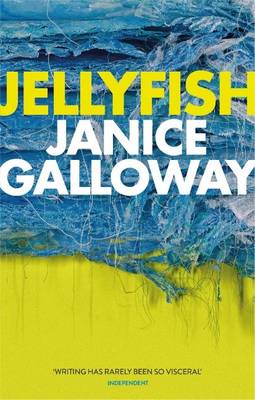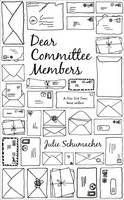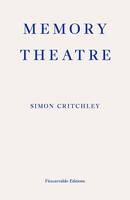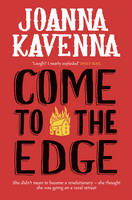Tania Hershman, The White Road and Other Stories (2008)
 One of the good things about short story collections is that they help give shape to an author’s work as a whole in a way that’s not necessarily apparent from individual pieces in isolation. Reading The White Road, I gain a sense of two main strands running through Hershman’s short fiction: first, there are a considerable number of short-shorts in the book. I think this is a particularly tricky form to do well, because the prose has to be so much denser to have impact; the short-shorts in Hershman’s collection are amongst the strongest I can recall reading, and having them together in the same volume only reinforces that impression.
One of the good things about short story collections is that they help give shape to an author’s work as a whole in a way that’s not necessarily apparent from individual pieces in isolation. Reading The White Road, I gain a sense of two main strands running through Hershman’s short fiction: first, there are a considerable number of short-shorts in the book. I think this is a particularly tricky form to do well, because the prose has to be so much denser to have impact; the short-shorts in Hershman’s collection are amongst the strongest I can recall reading, and having them together in the same volume only reinforces that impression.
Perhaps the main concern of the stories in The White Road, however, is science; many pieces begin have an epigraph from New Scientist, the subject of which may then be explored directly or more tangentially. ‘On a Roll’ begins with an epigraph about the randomness underpinning casino games, then tells of a woman who first has a dream in which she puts up an expensive pair of shoes as a stake at the roulette table, then seeks to enact her dream in reality; it’s a study of how the protagonist’s understanding of randomness enables her to make peace with her life.
‘My Name Is Henry’ employs a fairly straightforward reverse chronological structure to great effect, as it depicts a young man who knows his name, and goes backwards in time to uncover the cause of his amnesia; that progression is both affecting and chilling. The story ‘The White Road’ is set at a truck stop on the way to the South Pole, whose owner, Mags, travelled down there to escape a tragedy in her past; when that tragedy catches up with her, she knows it’s time to take drastic action. As so often in this collection, the human story is firmly to the fore; but the scientific underpinning gives the tale an added dimension of inevitability.
Tania Hershman’s website
Salt Publishing
Alison MacLeod, Fifteen Modern Tales of Attraction (2007)
 As the title suggests, the stories in this collection are populated mainly by lovers, at various stages of their relationships. Macleod’s tales are at their most striking for me when organised around a central metaphor or structure; for example ‘so that the land was darkened’ portrays a couple at three moments of literal darkness, showing the different moods of their relationship: the rush of new love during the 1999 eclipse; tension during a power cut in Toronto in 2003; and a realisation of deep love and concern after the London bombings of 2005. ‘Radiant Heat ’focuses alternately on a physicist taking a flight to a conference, and a long-haulage driver joining the effort to wreckage of the physicist’s plane. The concept of entropy, of heat in the universe dissipating, becomes a metaphor for the trajectory of the scientist’s marriage; and the contrast between the two strands of the story creates a real poignancy.
As the title suggests, the stories in this collection are populated mainly by lovers, at various stages of their relationships. Macleod’s tales are at their most striking for me when organised around a central metaphor or structure; for example ‘so that the land was darkened’ portrays a couple at three moments of literal darkness, showing the different moods of their relationship: the rush of new love during the 1999 eclipse; tension during a power cut in Toronto in 2003; and a realisation of deep love and concern after the London bombings of 2005. ‘Radiant Heat ’focuses alternately on a physicist taking a flight to a conference, and a long-haulage driver joining the effort to wreckage of the physicist’s plane. The concept of entropy, of heat in the universe dissipating, becomes a metaphor for the trajectory of the scientist’s marriage; and the contrast between the two strands of the story creates a real poignancy.
Elsewhere in the collection, ‘Sacred Heart’ is an effective portrait of a nineteen-year-old Naomi’s confused feelings towards the man who (she believes) died whilst sitting beside her on a park bench; she can’t decide whether she was attracted or repelled by his earlier advances, and the ebb and flow of this is very well realised. The protagonist of ‘The Will Writer’ is single, but dreams of sitting alongside his ideal woman in the SUV he’ll buy if his lottery numbers come up. Over the course of the story, his work brings him into with various couples, and the degrees of contentment they have in their relationships mirror the fortunes of the will writer’s own life, with the hoped-for lottery win seeming by turns a possibility and a distant dream; MacLeod makes this a fine character study.
Janice Galloway, Blood (1991)
 The tales in Blood take real life and filter it through dense, sometimes fragmented prose, until it becomes… more concentrated, one might say. In the title story, for example, a girl has her tooth removed by the dentist, and her desire to stanch the bleeding comes to represent something of a wish to hold herself in, as it were. ‘Plastering the Cracks’ begins with the straightforward premise of a woman calling in workmen to repair a room, but treats its material with a twist of absurdity, as the builders move in and communicate with the woman only through notes.
The tales in Blood take real life and filter it through dense, sometimes fragmented prose, until it becomes… more concentrated, one might say. In the title story, for example, a girl has her tooth removed by the dentist, and her desire to stanch the bleeding comes to represent something of a wish to hold herself in, as it were. ‘Plastering the Cracks’ begins with the straightforward premise of a woman calling in workmen to repair a room, but treats its material with a twist of absurdity, as the builders move in and communicate with the woman only through notes.
The piece ’two fragments’ deals directly with the idea of ‘inflating’ reality, as it contrasts the ways in which a father lost two fingers and a grandmother one of her eyes, with the outlandish explanations given to the narrator as a child. ‘Love in a changing environment’ pushes its subject slightly out of reality in a slightly different way, as it depicts the ups and downs of a couple’s relationship being affected by the changing nature of the shop above which they live. A series of pieces called ‘Scenes from the Life’ depict various situations, such as a father’s harsh life-lesson to his son, and an elderly woman’s appointment with a health visitor, as theatrical scenes, which puts distance between reader and action in a thought-provoking way.
Janice Galloway’s website
Like this:
Like Loading...
 The first is a review of Jellyfish, the new short story collection by Janice Galloway:
The first is a review of Jellyfish, the new short story collection by Janice Galloway:


 One of the good things about short story collections is that they help give shape to an author’s work as a whole in a way that’s not necessarily apparent from individual pieces in isolation. Reading The White Road, I gain a sense of two main strands running through Hershman’s short fiction: first, there are a considerable number of short-shorts in the book. I think this is a particularly tricky form to do well, because the prose has to be so much denser to have impact; the short-shorts in Hershman’s collection are amongst the strongest I can recall reading, and having them together in the same volume only reinforces that impression.
One of the good things about short story collections is that they help give shape to an author’s work as a whole in a way that’s not necessarily apparent from individual pieces in isolation. Reading The White Road, I gain a sense of two main strands running through Hershman’s short fiction: first, there are a considerable number of short-shorts in the book. I think this is a particularly tricky form to do well, because the prose has to be so much denser to have impact; the short-shorts in Hershman’s collection are amongst the strongest I can recall reading, and having them together in the same volume only reinforces that impression. As the title suggests, the stories in this collection are populated mainly by lovers, at various stages of their relationships. Macleod’s tales are at their most striking for me when organised around a central metaphor or structure; for example ‘so that the land was darkened’ portrays a couple at three moments of literal darkness, showing the different moods of their relationship: the rush of new love during the 1999 eclipse; tension during a power cut in Toronto in 2003; and a realisation of deep love and concern after the London bombings of 2005. ‘Radiant Heat ’focuses alternately on a physicist taking a flight to a conference, and a long-haulage driver joining the effort to wreckage of the physicist’s plane. The concept of entropy, of heat in the universe dissipating, becomes a metaphor for the trajectory of the scientist’s marriage; and the contrast between the two strands of the story creates a real poignancy.
As the title suggests, the stories in this collection are populated mainly by lovers, at various stages of their relationships. Macleod’s tales are at their most striking for me when organised around a central metaphor or structure; for example ‘so that the land was darkened’ portrays a couple at three moments of literal darkness, showing the different moods of their relationship: the rush of new love during the 1999 eclipse; tension during a power cut in Toronto in 2003; and a realisation of deep love and concern after the London bombings of 2005. ‘Radiant Heat ’focuses alternately on a physicist taking a flight to a conference, and a long-haulage driver joining the effort to wreckage of the physicist’s plane. The concept of entropy, of heat in the universe dissipating, becomes a metaphor for the trajectory of the scientist’s marriage; and the contrast between the two strands of the story creates a real poignancy. The tales in Blood take real life and filter it through dense, sometimes fragmented prose, until it becomes… more concentrated, one might say. In the title story, for example, a girl has her tooth removed by the dentist, and her desire to stanch the bleeding comes to represent something of a wish to hold herself in, as it were. ‘Plastering the Cracks’ begins with the straightforward premise of a woman calling in workmen to repair a room, but treats its material with a twist of absurdity, as the builders move in and communicate with the woman only through notes.
The tales in Blood take real life and filter it through dense, sometimes fragmented prose, until it becomes… more concentrated, one might say. In the title story, for example, a girl has her tooth removed by the dentist, and her desire to stanch the bleeding comes to represent something of a wish to hold herself in, as it were. ‘Plastering the Cracks’ begins with the straightforward premise of a woman calling in workmen to repair a room, but treats its material with a twist of absurdity, as the builders move in and communicate with the woman only through notes.
Recent Comments